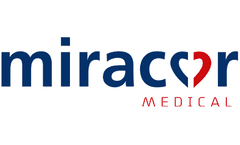Refine by
Muscle Cell Articles & Analysis
25 articles found
Biological Function of MGP MGP is primarily expressed in vascular smooth muscle cells, chondrocytes, and osteoblasts, where it is secreted into the extracellular matrix. ...
The cell cycle is an essential biological process that enables cells to grow, duplicate their DNA, and divide into daughter cells. ...
This breakthrough could significantly enhance treatment options for high-risk patients. 3. Stem Cell-Derived Cardiac Muscle Patches A cutting-edge approach using stem cell-derived cardiac muscle patches has shown the potential to repair damaged heart tissue. ...
Skeletal muscle microvascular endothelial cells (SMECs) play an essential role in maintaining muscle function, metabolism, and overall health. These specialized cells line the blood vessels within skeletal muscles, forming a barrier that regulates the exchange of substances between the bloodstream and ...
Understanding the Cytoskeleton The cytoskeleton consists of three main types of filaments: Microfilaments (Actin Filaments): Involved in muscle contraction, cell movement, and cytokinesis. Intermediate Filaments: Provide structural support and stability, connecting cells through desmosomes and hemidesmosomes. ...
Cellular Sources of MMPs MMPs are produced by a variety of tissues and cells. MMPs are secreted by pro-inflammatory cells and uteroplacental cells, including fibroblasts, osteoblasts, endothelial cells, vascular smooth muscle, macrophages, neutrophils, lymphocytes, and cytotrophoblasts. ...
IVS has carried out proof-of-concept studies to analyze the molecular mechanisms of action of different compounds on the contractile activities of different muscle cell types. IVS provides services to develop heart failure models driven by genetic mutations. ...
Studies have shown that, due to cell damage, enzymes in the cells are released from human blood, which accelerates the study of the causal relationship between disease and enzyme concentration in body fluids. ...
Lipoprotein lipase (LPL) is a glycoprotein synthesized and secreted by parenchymal cells such as adipocytes, cardiomyocytes, skeletal muscle cells, mammary cells, and macrophages, with a molecular weight of 60ku and containing 3-8% carbohydrates. ...
The heart is a unique organ in many respects since its activity is mandatory to sustain life. The heart’s circulatory system and coronary flow regulation are highly adapted to the vital role of the heart in sustaining life and to everyday physiological challenges. Understanding coronary physiology is key for treating patients with ischemic heart disease in general, and ...
This technology progresses spatial biology by enabling spatially resolved chromatin accessibility profiling to improve our understanding of cell identity, cell state and cell fate decision in relation to epigenetic underpinnings in development and disease. ...
Although the HAV is acellular when implanted, extensive preclinical and clinical testing has demonstrated that the HAV subsequently repopulates with the recipient’s own vascular cells. We report a first-in-man clinical experience using the HAV for arterial reconstruction in patients with symptomatic peripheral arterial disease. Methods: HAVs were manufactured using human ...
In a healthy vein, the intima is one cell layer thick and comprised solely of endothelial cells. With intimal hyperplasia, cells may migrate into the intima from the medial and adventitial layers of the vein and from the circulation . Once they migrate into the intima, these cells express markers for myofibroblast and smooth ...
Abstract The goal of this study is to develop unique native endothelium mimicking nanomatrices and evaluate their effects on adhesion and spreading of human umbilical vein endothelial cells (HUVECs) and aortic smooth muscle cells (AoSMCs). These nanomatrices were developed by self-assembly of peptide amphiphiles (PAs) through a solvent ...
RNA Sequencing in Cardiovascular Disease Research The use of scRNA-seq technology in cardiovascular research has a wide range of applications. scRNA-seq not only identifies rare cell subpopulations, but it also allows for cellular trajectory analysis based on each cell's transcriptome, which has been particularly beneficial in clarifying cell ...
The interview digs deep into how bit.bio’s next generation cellular reprogramming technology, opti-ox™, is enabling scientists in research and drug discovery to overcome the shared challenges presented by human muscle models. Mark explains how pioneering work conducted in the 1980’s sparked the development of opti-ox, and when this uniquely engineered genetic ...
Bybit.bio
This interim follow up report, at the long term time point of five years, assessed patient and conduit status in those who continued routine dialysis with the HAV Methods: HAVs are bioengineered by culturing human vascular smooth muscle cells on a biodegradable polymer matrix. In this study, patients with patent HAV implants at 24 months were followed every ...
Provide energy: SCFA can provide energy for colon cells, mucosal epithelial cells and muscles, etc. Among them, glucose produced by propionic acid in the process of gluconeogenesis can meet 30%-50% of the energy demand of animals, butyric acid can provide energy for the organism because it is converted into β-hydroxybutyric acid, and acetic ...
A new study clarifies how BRD4 (a protein that scientists have studied for many years) directs the spatial organization of DNA in the cell nucleus (a key function of stem cells to differentiate into muscle cells), which promotes the understanding of certain cancers and complex congenital diseases. ...
Studies have shown that, due to cell damage, enzymes in the cells are released from human blood, which accelerates the study of the causal relationship between disease and enzyme concentration in body fluids. ...












